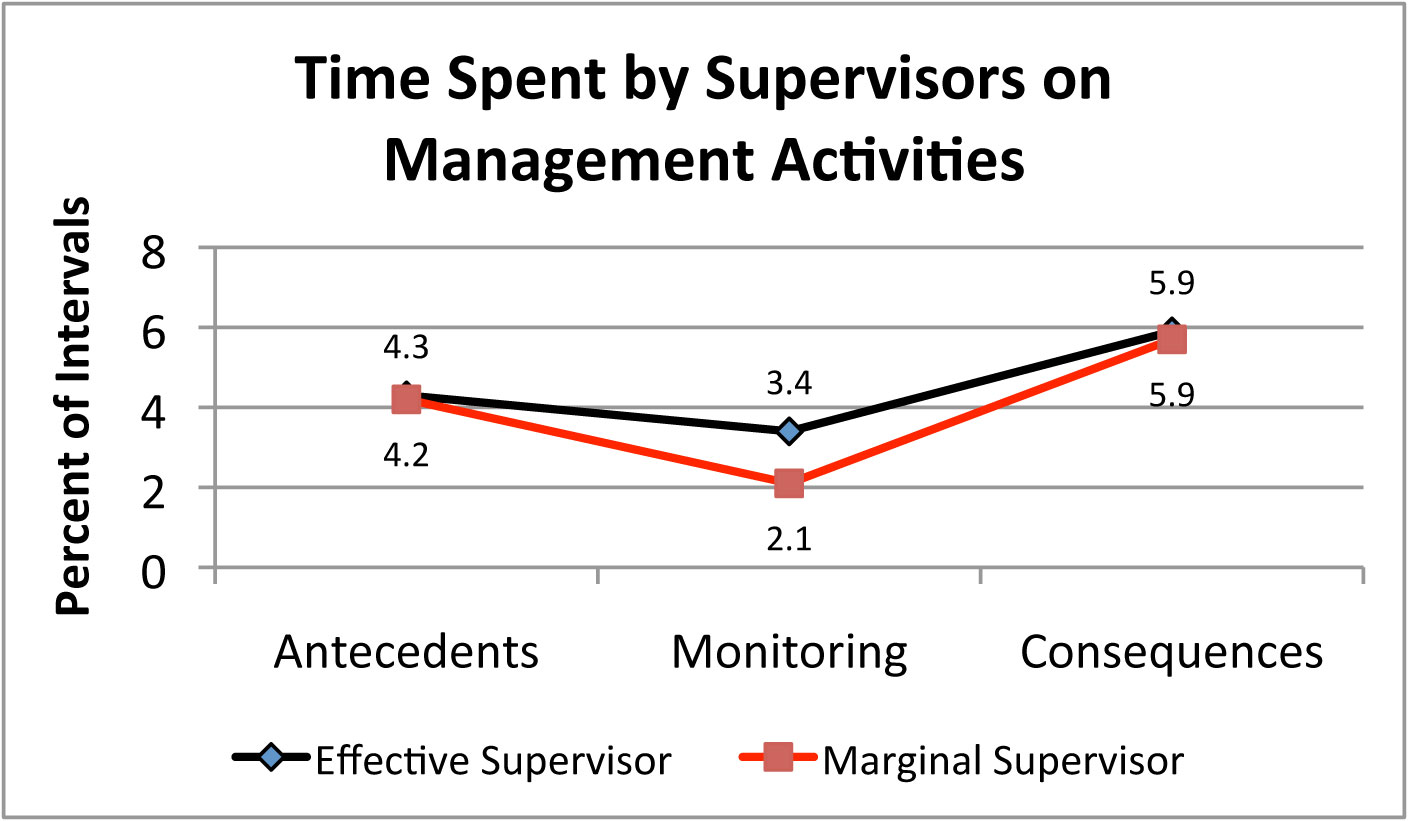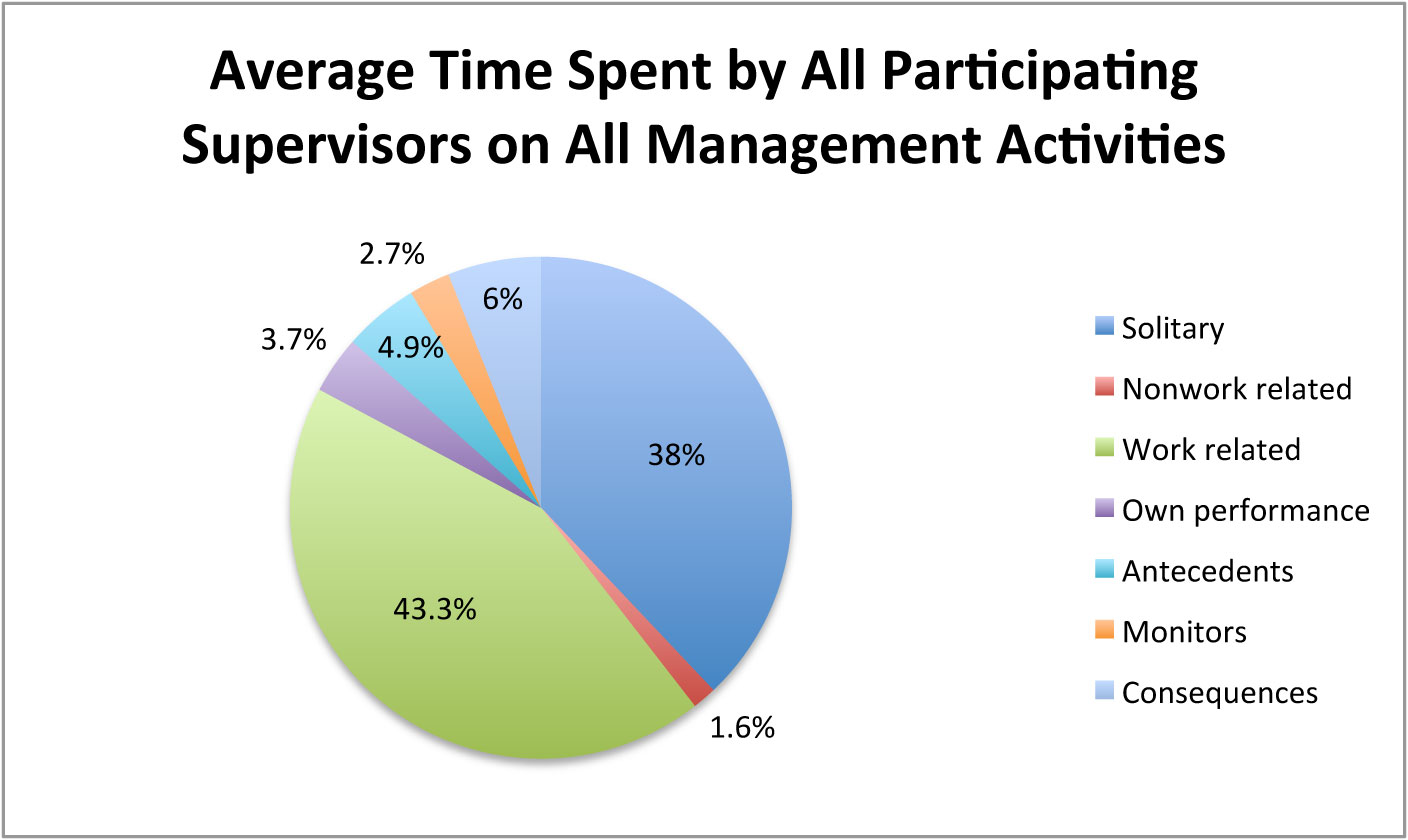What Distinguishes Effective Supervisors From Marginal Supervisors?
Why is this question important? Disappointing school reform interventions and flat high-stakes test scores have focused attention on teacher performance as a way to improve student performance. Taking a cue from the experience of business, school administrators are adopting performance management strategies to improve teacher performance. Studies of managers provide insight into effective supervision practices that principals can apply in schools.
See further discussion below.


Source(s): Toward Effective Supervision: An Operant Analysis and Comparison of Managers at Work, 1986
Result(s): The study identified the average time managers spent in each of the seven supervisory categories in the Operant Supervisory Taxonomy and Index (OSTI) developed by the study author, Komaki.
The Komaki study examined three hypotheses:
- Effective supervisors spend more time than marginal supervisors providing monitoring and providing consequences to employees.
- The study found no difference in the amount of time effective supervisors spent providing consequences.
- However, effective supervisors were found to spend significantly more time monitoring. Although the difference in absolute time was not large, effective supervisors spent 50% more time monitoring employees' work.
- Effective supervisors rely more on sampling actual work than on self-reports or secondary sources when monitoring.
- 11 of 12 effective supervisors relied on direct sampling of work.
- 4 of 12 marginal supervisors relied on direct sampling of work.
- There is no difference between effective supervisors and marginal supervisors in the rate they provide positive, negative, or neutral consequences.
- As the hypothesis predicted, no differences were found in the rate that the two types of supervisors provided consequences.
Implication(s): The results indicate very little difference in the amount of time effective and marginal supervisors spent in most activities each day, with two critical exceptions. The points of departure are the amount of time effective supervisors spent monitoring performance and the greater reliance of effective supervisors on direct sampling when collecting performance data.
Effective supervision that motivates employees to perform to expectation and encourages them to meet critical goals has gone undefined for decades. Knowing what constitutes effective supervision and applying these strategies to schools to improve teacher performance may prove invaluable as an alternative to traditional supervision practices, largely a hands-off "management by exception" approach in which principals intervene only when problems occur. There is ample anecdotal evidence that good principals make a significant difference and are an important variable in building an exemplary school. The Komaki study offers empirical evidence on the differences between effective and marginal managers. From this information, school systems can more effectively set expectations for principals, who are in actuality managers of schools, and train them to be better supervisors of teachers and ultimately boost student performance.
Author(s): Judith L. Komaki
Publisher(s): American Psychological Association
Study Description: The study was conducted with 24 managers from a large medical insurance company. The top 12 identified as effective supervisors and the bottom 12 identified as marginal supervisors were observed up to 20 times, for a total of 464 observations lasting 30 minutes, and their behavior categorized using the Operant Supervisory Taxonomy and Index (OSTI). An extreme or contrasted group design was used for the study. To ensure inter-observer reliability, tests were conducted continually throughout the collection period. The mean overall reliability score for all categories was 95.4%.
Definition(s):
- Effective supervisor: (The definition offered for the Komaki study) The top 12 identified as effective supervisors were identified as the top 28% in terms of motivating others.
- Inter-observer reliability: The degree to which different observers give consistent accounts of the same event.
- Marginal supervisor: (The definition offered for the Komaki study) The bottom 12 identified as marginal supervisors were identified as the bottom 28% in terms of motivating others.
- Operant Supervisory Taxonomy and Index (OSTI): An instrument used to observe and classify a supervisor's behavior. The OSTI includes seven categories, the first three derived from operant conditioning theory:
- Antecedents: Behavior that instructs, reminds, or conveys an expectation of performance; e.g., "You can submit your plan before tomorrow morning." "Let's coordinate your plan with the adjoining classroom."
- Monitoring: Behavior related to collecting information about an individual's performance, such as listening to a report given by a subordinate.
- Consequences: Behavior that indicates knowledge of someone else's performance, whether the information is positive, negative, or neutral; e.g., "I noticed you identified a serious problem in your report." "You saved us from making a very big mistake."
- Own performance: Behavior related to the supervisor's own performance.
- Work related: Behavior pertaining to work, but not to performance.
- Nonwork related: Behavior not pertaining to work.
- Solitary: Behavior in which there is no interaction with others.
Citation: Komaki, J. L. (1986). Toward effective supervision: An operant analysis and comparison of managers at work. Journal of Applied Psychology, 71(2), 270-27.
